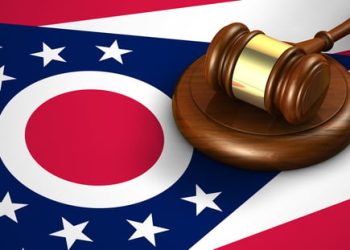U.S. Supreme Courtroom
Did ‘grand discount’ fail to materialize in Trump poll case? Metadata results in hypothesis

The U.S. Supreme Courtroom left “a giant clue dangling within the metadata” about potential negotiations when it issued a unanimous resolution Monday that stored former President Donald Trump on the poll in Colorado. (Picture from Shutterstock)
The U.S. Supreme Courtroom left “a giant clue dangling within the metadata” about potential negotiations when it issued a unanimous resolution Monday that stored former President Donald Trump on the poll in Colorado, in line with an article in Slate.
Though all of the justices agreed that Trump ought to stay on the poll, four justices said the bulk shouldn’t have gone additional by ruling that Congress had the unique energy to implement the constitutional ban on insurrectionists holding workplace.
The 4 justices expressed their views in two separate concurrences. One was collectively written by Justice Sonia Sotomayor, Justice Elena Kagan and Justice Ketanji Brown Jackson—the excessive courtroom’s liberal justices—and the opposite was written by conservative Justice Amy Coney Barrett. The liberal concurrence was angrier in tone than Barrett’s, who emphasised unanimous settlement on the poll problem and said that “this isn’t the time to amplify disagreement with stridency.”
However the metadata exhibits that Sotomayor was initially a partial dissenter, in line with Slate, Above the Law and Law360.
One strategy to see the metadata, on some computer systems, is by copying and pasting the highest of the liberal justices’ concurrence that claims “Sotomayor, Kagan and Jackson J.J., concurring in judgment” right into a Microsoft Phrase doc. The pasted model reads “Sotomayor, J., concurring partly and dissenting partly.” The identical metadata exhibits while you seek for the phrase “dissent.”
“What occurred?” Slate asks. “Most clearly, the Supreme Courtroom rushed out this opinion and forgot to test the metadata. … The deeper query stays, in fact: Why was an opinion initially authored by a lone justice as a partial dissent remodeled right into a concurrence authored by all three liberals collectively?”
Paul Schiff Berman, a professor on the George Washington College Regulation College, thinks that Sotomayor’s opinion might have turn into a concurrence in an try to emphasise unanimity.
“I believe they actually needed to attempt to make this a unanimous opinion to be able to say this isn’t about ideology and it’s not about politics,” he instructed Law360.
Slate affords additional hypothesis. One rationalization is that Kagan and Jackson “have been holding their votes fluid” within the hopes of becoming a member of with Barrett to hunt a fifth vote for a slim holding that didn’t deal with whether or not Congress had unique authority to implement Part 3 of the 14th Modification. When Kagan and Jackson failed in that quest, they teamed up with Sotomayor.
“Broaden the scope of the potential negotiations, although, and issues get extra fascinating,” Slate says. “After oral arguments, many sensible courtroom watchers mused that the justices would possibly attain a grand discount that tied this case to a separate dispute involving Trump’s declare of immunity from legal prosecution for election subversion. The liberal justices would possibly conform to hold Trump on the poll if the courtroom additionally refused to take up the immunity case.”
If the Supreme Courtroom had refused to listen to the immunity case, the federal appeals courtroom resolution holding that Trump didn’t have immunity from prosecution would stay in place. And that will imply that his legal trial within the federal election-interference case would possibly happen earlier than the presidential election.
“That, in fact, didn’t occur,” Slate says. “The courtroom sided with Trump on the poll problem and took up his immunity case final week on a less-than-speedy timeline, serving to him run out the clock to November.”
Slate raises different prospects, together with that Barrett agreed to listen to the immunity case “on a slightly expedited foundation” this time period, reasonably than push the case onto the docket for subsequent time period.
Or perhaps proof of a discount will flip up when the Supreme Courtroom points its opinion within the Trump immunity case, in line with Above the Regulation.
“Maybe buried within the metadata,” Above the Regulation says.
See additionally:
“SCOTUS agrees to hear Trump’s presidential immunity claim”
“What happens next after Supreme Court agrees to hear Trump immunity case”







